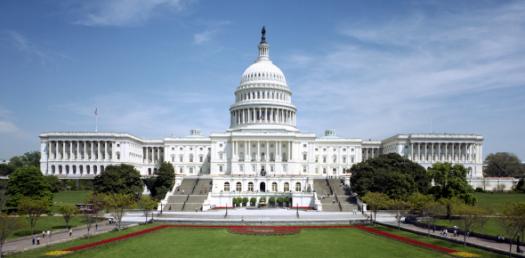A system for maintaining order and security in a society is known as a...
When the control in a government is in a hereditary position, such as...
John Locke also believed in a social contract theory, which he based...
When the people elect representatives to vote on the issues...
The President of the United States serves a ____ year term.
Article III of the Constitution deals primarily with the...
A ___________________ exists when people are the source of authority...
Jean-Jacque Rousseau was a political theorist from France, who...
When a government is controlled by a few select individuals or a small...
The Magna Carta was the first document to set limits on a monarch’s...
The ___________________has the sole power to be the Commander-in-Chief...
When there is a division of powers between national and state...
When the people directly vote on issues confronting their society,...
Article II of the Constitution deals primarily with the ...
When the control of government is achieved and maintained through...
Montesquieu was the first to introduce the concept of “separation of...
Justices of the Supreme Court serve a ____ term.
John Locke believed that people needed an absolute monarch to ensure...
The English Bill of Rights gave British subjects the right to petition...
Each branch of the central government has the power to restrain the...
When no formal government system exists, the country is considered to...
When all key powers lie with each individual state governments, this...
Under the Constitution, the United States could best be described as a...
Thomas Hobbes was the political theorist who first introduced the idea...
The _______________________has the sole power to declare laws...
Article I of the Constitution deals primarily with the...
Under the Articles of Confederation, the United States could best be...
The beginning of the Constitution introduces the document and briefly...
The Magna Carta established the “rule of law,” but these laws did...
Jean-Jacque Rousseau believed that if a government based on “popular...
The __________________ has the sole power to nominate Supreme Court...
The _____________________ has the sole power to approve or veto laws.
When all key powers are concentrated with the national or central...
Montesquieu was also the first to introduce the idea of a three-branch...
Thomas Hobbes believed that people living under a social contract did...
The Ancient Romans contributed the idea of a __________________ to the...
When a government has total control over every aspect its citizens...
House of Representatives members serve a ________ year term.
The __________________ has the sole power to confirm Supreme Court...
Members of the US Senate serve a ____ year term
The Ancient Greeks contributed the idea of a ___________________ to...
The _____________________ has the sole power to settle disputes...
Delegate who introduced the idea of three branches of government; also...
The __________________ has the sole power to propose tax laws.
The English “Right of Petition” was the first document to prohibit...
The ___________________ gives Congress the right to make all laws...
The ______________________ has the sole power to ratify treaties...
The Mayflower Compact was one of the first documents that governed...
The ___________________ has the sole power to impeach the President.
Today the American system of government is a democracy, and its form...
















